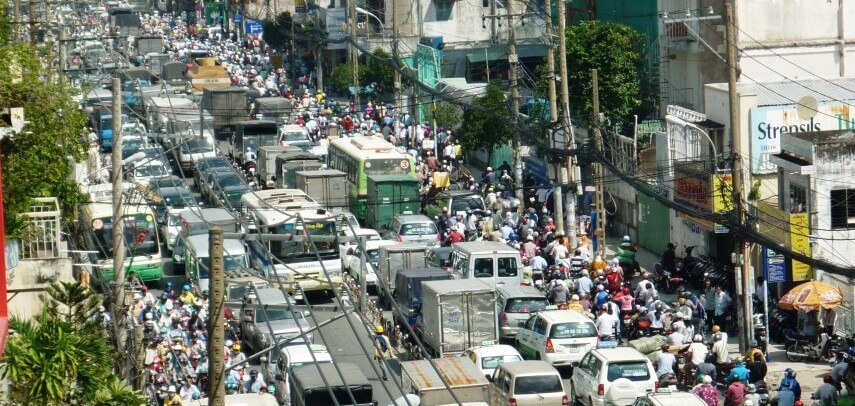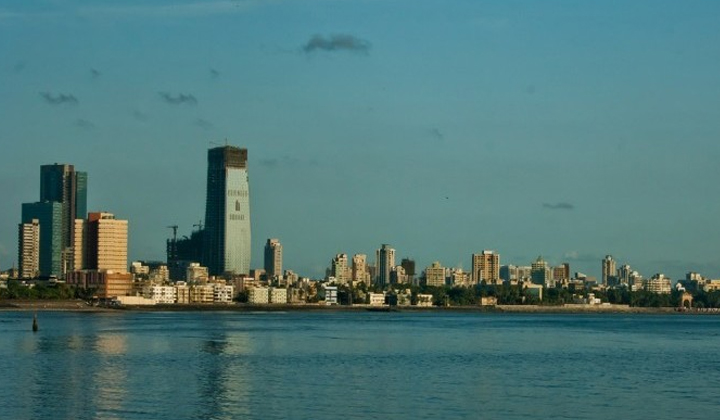Trending Now
- Action should be taken against the cops who protect the Ganja accused in TN : PMK leader Anbumani Ramdoss
- Votes that go to Congress or INDI alliance is a waste : PM Modi
- Court grants one-day custody to police to investigate Youtuber Savukku Shankar.
- We actually got our independence only in 2014. The independence to change this country as it should be : Actor , politician, Kangana Ranaut
Real Estate
The Odd-Even Debate: Do Vehicles Congest Cities?
![]() February 17, 2016
February 17, 2016
Shanu
On February 11, Delhi Chief Minister Arvind Kejriwal announced that the second phase of the odd-even road space rationing policy would be in effect from April 15 to 30. In the first phase during January 1-15, the odd-even rule, for all its flaws, did help decongest Delhi roads to a degree.
Does Delhi need this?
For a major metropolis like national capital Delhi, which also happens to be the second most populous city in the world, a certain degree of road congestion is inevitable. The roads in question are public property. However, while driving through a city’s roads, vehicles consume valuable real estate without paying for it. Further, while private automobiles such as cars carry less passengers, they contribute far more to congestion when compared to public vehicles such as buses. This is because cars on city roads far outnumber buses. A bus that carries 50 people occupies far less space than 50 cars that typically carry one person each. Many of the cars that congest Delhi’s roads are cruising for valuable parking spaces for free. When compared with mass transit systems like the Delhi Metro network, which prevents nearly 3, 00,000 tonnes of carbon emissions every year, cars pollute more. At present, Delhi cannot afford so many cars driving through its roads.
Blaming it on cars?
However, the presence of a large number of cars does not mean that Delhi would have been less congested or polluted if they did not exist. Ancient cities were even more congested and polluted. In ancient Rome and Babylon, over half a million people lived in areas with an effective radius of less than two kms. In 900 AD, there were 9, 00,000 million people in Baghdad, in an area that could be traversed by foot. In fact, Julius Caeser’s measures to decongest the roads of Rome were more radical than that of Kejriwal. Caeser once issued an order to prohibit wagons in the central business district (CBD) of Rome for 10 hours after the sunset. Horse wagons polluted the road so much that they were a major health hazard. Even as late at 1908, in New York, 20,000 people died every year because of horse manure-related pollution. In the 19th century, things were worse. Throughout the 19th century, city governments had formulated policies to cure pollution which horse carts led to.
But, the world was incomparably less populated in those days. In Caeser’s time, world population could have been anywhere between 170 and 400 million. Today, it is over 7,000 million. But, roads are far less polluted and congested now. This is because transport systems have decongested modern-day cities. In ancient cities, population and employment densities in CBDs exceeded road capacity. This is because when people travelled on foot or in horse carts, they could not travel much. Few would be willing to walk more than 30-40 minutes to reach workplace. So, people lived in compact houses which were situated close to each other, in the CBD’s of ancient cities.
According to media reports in those days, in Boston of 1891, cars were parked so close to each other on roads that people could walk from one place to each other by walking through the roofs of cars stranded on roads in the afternoon rush hours. Even though automobiles existed in those days, road capacity was still insufficient. To put it simply, for roads to be uncongested, the road capacity should be greater than its demand. In Boston of 1891, there were not many cars, but road capacity was even more constraining.
Where does the problem lie?
If Delhi’s road capacity improves, and if economic activity is less concentrated in the heart of the city, roads will become less congested. Remember, the most congested cities in the world are often not cities which have the highest rate of car ownership. This is because transportation systems are equipped to handle the demand. In cities like Singapore, electronic pricing has effectively lowered congestion.
Even in Delhi, dispersal of commercial and residential growth from the CBD to smaller centers and suburbs like Noida, Gurgaon, Faridabad and Ghaziabad, too, has lowered congestion in its CBD, Connaught Place. After the Delhi Metro was introduced, parking shortage in Connaught Place has declined by 10 per cent. In the US and the UK, railways cured congestion in the 19thcentury to a degree by shifting congestion from city centers to suburbs. This tendency has intensified since 1880. When congestion is shifted from the nucleus to the periphery, people find this more bearable. It is worth nothing that even in Delhi, when the odd-even rule was imposed, congestion was shifted from roads to metro stations, walkways and other parts of the city.
Delhi’s’ poor record in handling road congestion is by no means unique. In the US, where we have a large data on increase in demand for road space and congestion, we find that the rise in demand has led to much greater congestion. But, even then it scores better than Delhi. However, unlike in Delhi, congestion was shifted from CBD to the rest of the city and inner and outer suburbs to a larger degree.
























